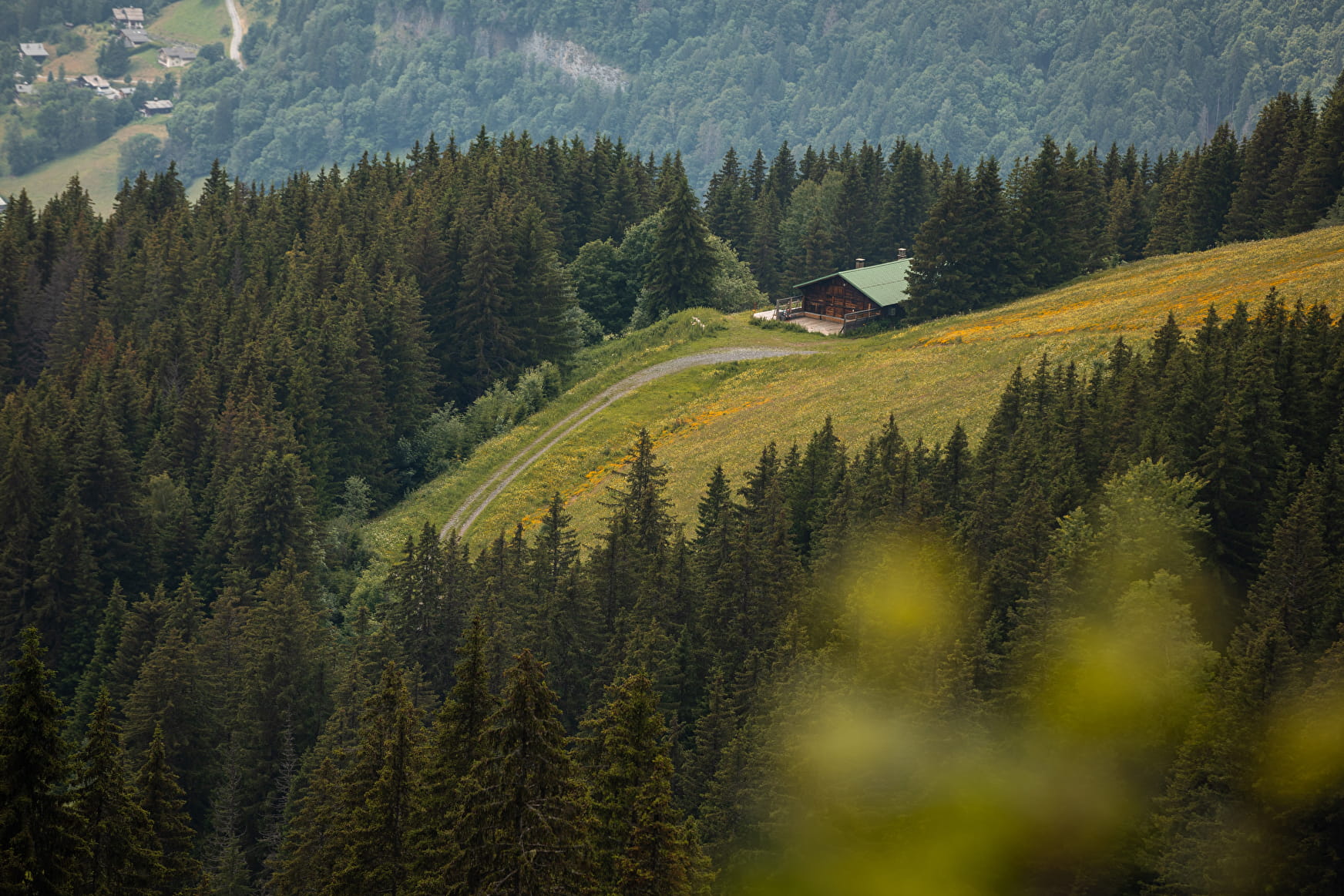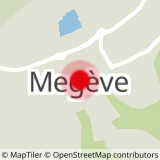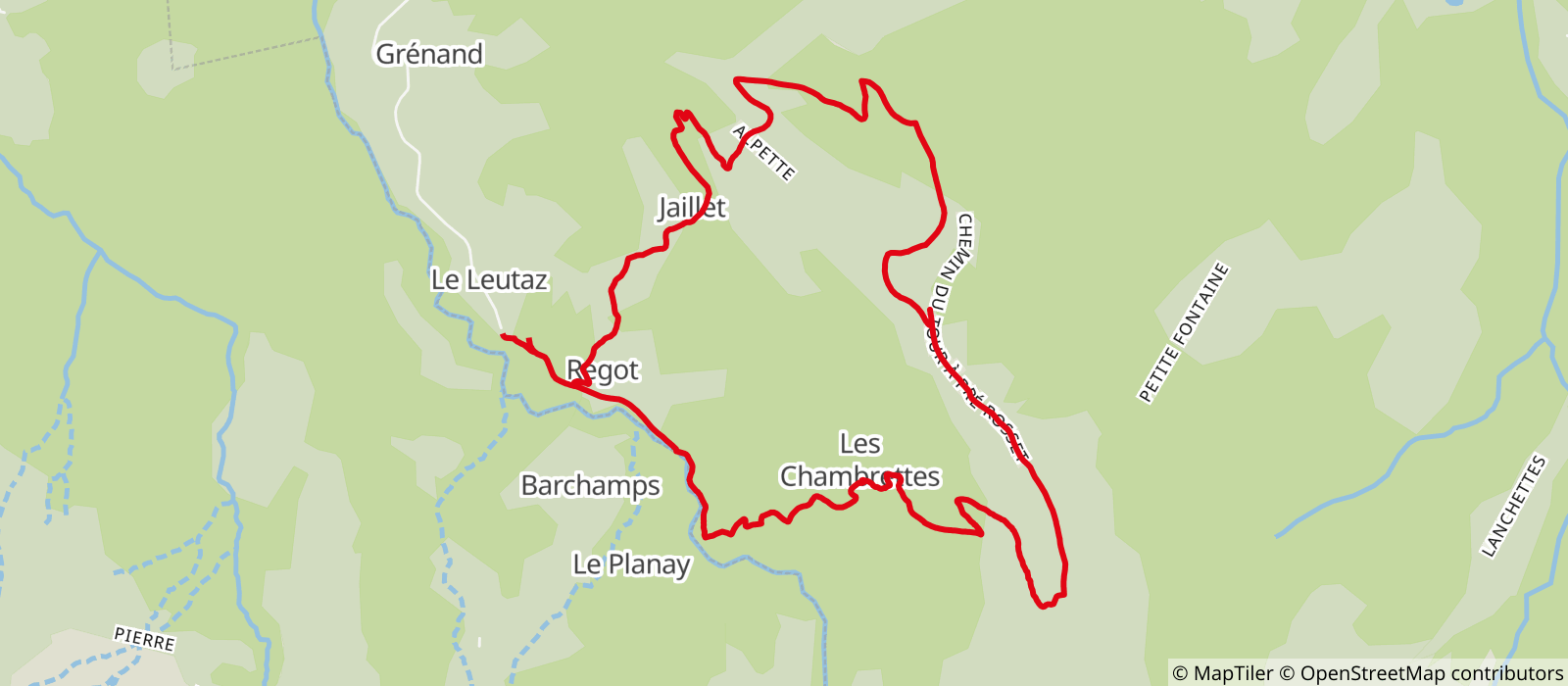1/From the Le Leutaz car park, follow signs for Sur les prés and Pont de Rego at the bottom of the valley, continuing straight ahead. Passing through two mountain pastures, the climb through the forest ends with a beautiful view of the Sangle and the ridge around the Aiguille Croche (2487m): you have reached Sur les prés. 2/Follow the forest track towards Rochebrune on your left. You will cross the top of the Megève ski resort. 3/At the Chalet de l'Alpette, continue along the track on the right, descending slightly towards Rochebrune. 4/Backtrack along the Leutaz and then the Fontanettes, descending into the forest. A loop in this direction (les Chambrettes, Sur les prés then back via les Fontanettes) makes for a gentler, less steep descent!
Translated with DeepL.com (free version)
- Sport
Rochebrune ridge trail

A loop trail above Megève with an all-round view of Mont-Blanc, and the Fiz and Aravis mountains.
Between forest paths and more exposed trails, you'll enjoy beautiful views and learn more about ticks and the impact of taking your dog hiking.

About

Further informations
Ground, Grit
You can also try this digital feature for an educational hiking experience that raises awareness about biodiversity and best practices to be adopted in a mountain environment:
https://rando.nature-haute-savoie.fr/trek/1185-Sur-les-cretes-de-Rochebrune
* Dogs in natural spaces
Of course, we'd all like to see our dogs running around freely in natural surroundings. But straying dogs have an impact on wildlife and farm herds, with potentially heavy consequences. Biodiversity is disturbed by the smell, the excrement and the very presence of dogs, which can carry germs, cause stress to wildlife and even destroy eggs or fledglings present on the ground.
As a general rule, between April and June (the main reproduction period), your dog, if allowed at all, must be kept on a lead in natural spaces.
In Haute-Savoie, dogs are allowed only in the Contamines-Montjoie nature reserve and the Roc de Chère reserve at Lake Annecy (if kept on a lead).
On the mountain pastures, dogs are a threat and cause stress to herds and protection dogs.
* Tick bites
Ticks are blood-sucking acarids of between one and six millimetres in length.
They are the no. 1 spreader of disease in animals (piroplasmosis) and the second most common for humans (after mosquitoes), with Lyme's disease. A tick becomes a carrier of the disease only after having bitten an infected animal. Not all ticks are infected, only 10 to 20% of them carry the virus. Their bite is painless, as the tick itself injects a local anaesthetic.
Good practices to adopt while hiking between April and October
1- Wear long clothing that covers your arms and legs and is close-fitting at the wrists and ankles.
2- On your return, examine your body thoroughly, especially armpits, scalp and any folds in the skin. If you notice a tick, remove it immediately with a tick hook, destroy it and only then, disinfect the bite.
3- If you get bitten, you must keep an eye on the zone for six weeks. In particular, if a red ring forms around the bite, talk to a doctor about it.
* The beautiful apollo
This butterfly is a rhopaloceros (daytime) insect which can be seen in the mountains, in open areas with a certain type of vegetation. The caterpillars like certain succulent plants, while the adult feeds on the nectar of thistles and various cornflower-type plants. It is divinely beautiful, but you must content yourself with just admiring it, because this threatened species is protected both in France and internationally!
* The orchids are wild too!
In France, the very mention of orchids makes us very curious and conjures images of cultivated tropical flowers.
But orchids can be found just about anywhere in the world and make up the largest family of plants with more than 30,000 species. There are 160 species recorded in France and they have adapted to all kinds of habitats:
• Heath and scrubland: Ophrys, Serapias,
• Dry grassland: Ophrys, Orchis,
• Humid grassland and marshes: Anacamptis palustris,
• Forest: Epipactis, Cephalanthera,
• Alpine meadows: Gymnadenia , Pseudorchis albida, Traunsteinera.
Prices
Free of charge.
Reception
Period of practice
All year round.
- Pets welcome
Contacts
Access

